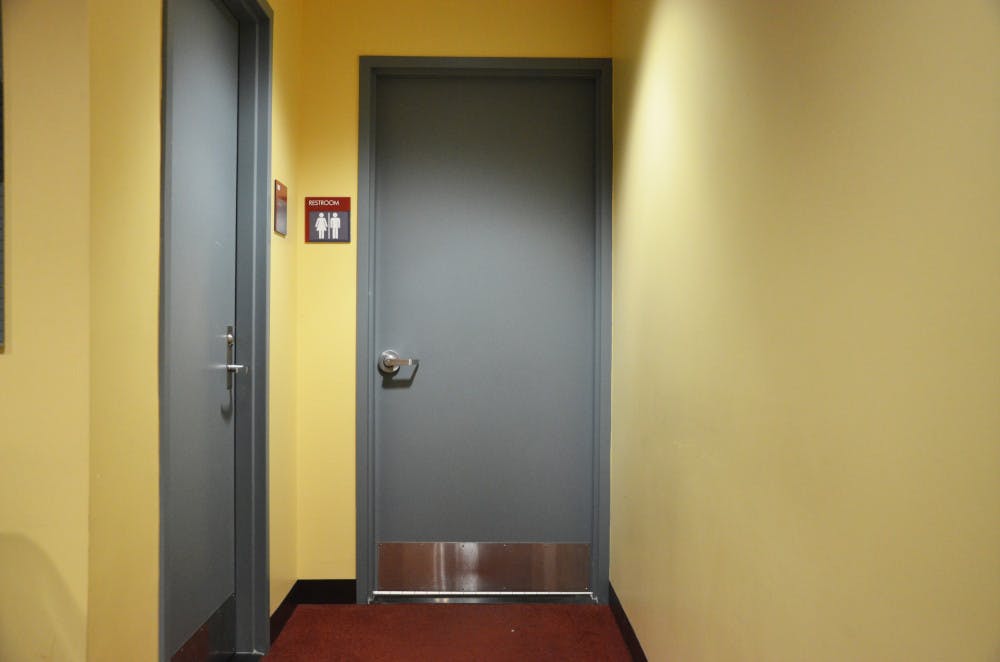The gender-inclusive bathroom in J. Walter Wilson has moved to the third floor due to the mailroom renovations, said Kelly Garrett, program director of the LGBTQ Center.
Before the renovations last summer, a gender-inclusive bathroom was located at the end of the hallway near the old mailboxes, Garrett said. The new layout of the mailroom prevented access to that bathroom, so it was removed, she said.
The third floor was selected as the bathroom’s new home because of its central location in the building, she added.
Though the new location is slightly less convenient, a much greater concern is making sure people know that the third floor gender-inclusive bathroom exists, said Nico Sedivy ’17, a member of Queer Alliance.
The term “gender-inclusive” means that people of all genders are welcome to use the facility, Sedivy said. The frequently used term “gender-neutral” is irrespective of gender and implies that gender is not important, Sedivy added.
“People have been harassed for trying to use the bathroom due to their gender identity,” Garrett said. “There are many different reasons why it’s important that there are multiple options for people.”
The LGBTQ Center is making efforts to ensure that Brown community members know about the gender-inclusive bathrooms on campus, Garrett said. The center is currently updating a list on its website about gender-inclusive bathrooms, which should be completed in a few months, Garrett said. The gender-inclusive bathroom will hopefully be listed on the directories in J. Walter Wilson as well, she added.
The conversion of multi-user bathrooms to gender-inclusive bathrooms has found moderate support among the student body. A fall 2013 Herald poll found that approximately 28 percent of students supported making all multi-user bathrooms gender-neutral, while 47 percent supported making some bathrooms gender-neutral and 15 percent did not support converting any bathrooms.
“People who don’t feel comfortable using men’s or women’s bathrooms still need a place to use the bathroom,” said AJ Whitman ’17, a member of QA and leader of Spectrum, a subgroup for trans, nonbinary and gender-questioning students.
“Gender-inclusive bathrooms should be a thought during the planning process and not just an afterthought,” Whitman said.
“There’s no reason for single-use, single-gender bathrooms,” Sedivy said.
An additional concern for the LGBTQ Center is encouraging individuals who do not need gender-inclusive bathrooms to use other bathrooms that are accessible, Garrett said. Students who identify as cisgender sometimes use a gender-inclusive bathroom when other bathrooms are full, preventing other students who need to use the gender-inclusive bathroom from doing so, she said.
“If you don’t have gender-inclusive bathrooms in accessible places, that’s saying you can’t use a bathroom unless you’re in your home, which is not practical,” Sedivy said.
“We are not advocating for all bathrooms to be gender-inclusive,” Garrett said. “We want people to have a choice.”





